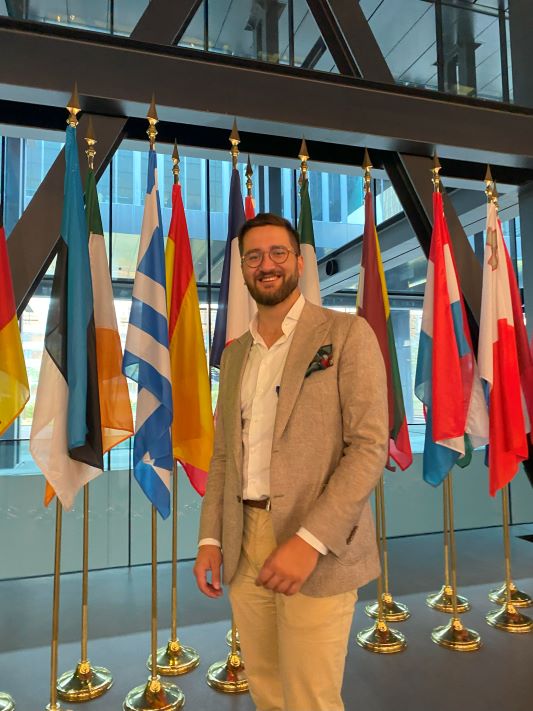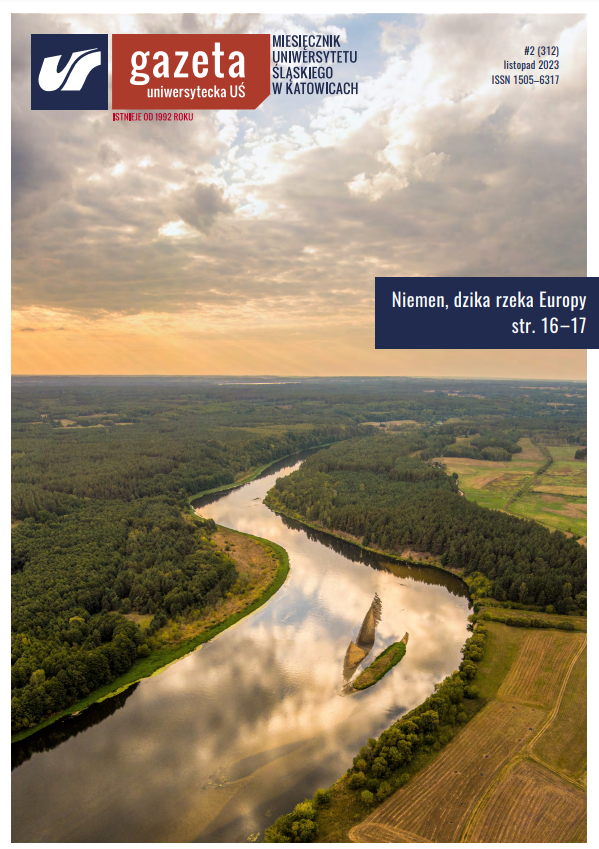Artur Tyński, MA | private archive
| Weronika Cygan |
The need to gradually phase out coal and the unstable political situation in the country and abroad mean that energy security and the diversification of energy sources have often been talked about in recent years. One way to guarantee both of these things may be to turn to energy clusters.
Energy clusters do not have a long tradition in Poland and have only started to bud in the last few years. So far, their rather uncertain legal status has not been very conducive to their creation, although this may soon change due to regulations that will come into force at the beginning of next year. Artur Tyński, MA, a PhD student at the Faculty of Law and Administration, looks at renewable energy sources (RES), nuclear energy, and energy clusters in his research. He sees the latter as an important factor intended to strengthen energy security by ensuring self-sufficiency of local communities or enabling the transformation towards a green economy.
Network
What do we mean by energy clusters? They are a particular organisational structure, a type of so-called energy community, which operates in our country on the basis of a civil law agreement. They should not be seen as energy suppliers, but rather as a network through which energy is distributed.
“The task of clusters is to coordinate the activities of entities included in their structures. As a rule, we are talking about local government, municipal companies, and the largest energy-intensive entrepreneurs, but at the medium voltage level. This means that there is unlikely to be room for a large smelter plant here, but a factory producing cars, boxes or forks will definitely fit in”, adds the young scientist.
In the West, where the institutions of energy communities have existed since the end of the 20th century, they are much more established, thanks to which they can actually coordinate the supply of large volumes of electricity to local governments, industry, services and residents. This is the case, among others, in the United States, Germany, the Netherlands and Finland.
Increasing efficiency
Local governments are increasingly investing in photovoltaics, which will be most effective in July and August, when some facilities, especially schools, remain closed or operate to a very limited extent. This means that during this time a large part of the energy is not used to its highest effectiveness. This could change if the local government was part of an energy cluster.
“The energy produced by the school is sent to the distributor. After some time, some of this energy may return to the facility or it can receive a monetary equivalent instead. Let’s assume that during the same summer holiday period, there is a municipal company operating, e.g. a waterworks company, that needs electricity 24 hours a day. If the school produced energy but did not use it, the excess energy could flow directly to the utility company. Energy clusters, through a coordinator acting as an aggregator, can therefore enable such processes, thus leading to more effective energy management at the local level”, explains Artur Tyński, MA.
If this idea sounds so good, why are energy clusters still not widespread?
Legal basis
The regulations applicable to energy clusters in Poland so far were so general that they did not facilitate their organisation – there were no tools with which the creators of the energy community could effectively manage it.
The PhD student from the University of Silesia lists the regulations in force in Poland governing the functioning of energy clusters, including the latest European guidelines. The first one is the Act of 1997 on energy law, and then the Act on Renewable Energy Sources of 2016, which treated renewable energy sources in a special way. In 2017, the first energy communities began to emerge in Poland – energy clusters were created primarily in cities, in more urbanised areas. Energy cooperatives were intended for rural areas, the development of which was also significantly limited. According to Artur Tyński, MA, the years 2018 and 2019 saw a “small earthquake” because two directives were introduced at the European level, although each was developed by different circles within the EU administration. Therefore, the standards resulting from them are somewhat mutually exclusive, but they oblige the European Union Member States to implement regulations introducing even more types of energy communities, as well as a system to support their development. Ultimately, cheaper electricity is to be guaranteed to an entity that is a member of such a community, including a cluster. It took several years to adapt Polish law to European guidelines, but the changes have already been introduced, and the announced regulations are to enter into force partly on 1 January 2024, and fully on 1 July 2025.
“Currently, energy clusters are still at the organisational stage. Clusters located in the Silesian Voivodeship already gather members of local governments, businesses, municipal companies and non-governmental organisations. However, it is still not a very significant activity. Most often, it involves obtaining various subsidies for the construction of electricity sources – photovoltaic farms, windmills or energy storage facilities. The entire sector is in its infancy, although there is actually quite a lot going on at the moment. Recruitment for pilot clusters under the national reconstruction plan is underway, and various technical and construction projects are being developed for further investments”, says the PhD student.
Towards green energy
Creating new energy communities may also be a solution, even a temporary one, for Poland’s much-needed energy transformation and the need to move away from coal power plants. It is also an important step towards increasing the country’s energy security.
As already mentioned, all types of energy communities are included in European legislation and as such are part of climate policy By definition, clusters can use various energy sources, including emission-based ones – based on coal or gas, but the so-called green energy is more desirable. The recently announced UC99 amendment to the Renewable Energy Sources Act is an example of emphasis being put on renewable energy sources. According to this amendment, support for clusters is provided, the amount of which depends both on the level of self-sufficiency and on whether the energy produced can be called green.
“Despite the very intense energy transformation over the past 6-7 years, most of the Polish energy sector is still based on coal, which is why it is one of the most emission-intensive economies in the EU. As part of the Green Deal, we are obliged to reduce emissions. Apart from political issues, it will simply be economically profitable for us, because currently our energy companies have problems with obtaining financial or credit support to implement various investments”, explains Artur Tyński, MA.
Increasing energy security
The ongoing war in Ukraine, where the Russians constantly realise attacks, among others, on energy infrastructure, has clearly reminded us that energy security should not be underestimated. This branch of the economy in our country will be strengthened by the dispersion of energy sources guaranteed by clusters.
It should be remembered that it is equally important to diversify energy sources, which clusters also allow. Poland’s embarrassing problem is the lack of any nuclear power plant, which, although promised by the government for years, has not yet been built. The young scientist from the University of Silesia notes that focusing on nuclear energy is a necessity and, moreover, it meets the energy security guidelines to a much greater extent than renewable energy.
“Nuclear energy is stable, measurable and we can control it. We know how much energy a given reactor will produce and in what time period. We can manage it all. Renewable sources, on the other hand, are unpredictable and sometimes generate more energy than needed, and other times they do not generate it at all”, explains Artur Tyński, MA and adds that there are currently several nuclear projects included in the updated Polish energy plan until 2040. As he claims, investing in nuclear power, apart from increasing security, will also reduce the emission intensity of the Polish economy.
Article ‘Dispersed Energy– a turn towards clusters’ was published in the November issue of University of Silesia Magazine No. 2 (312).







